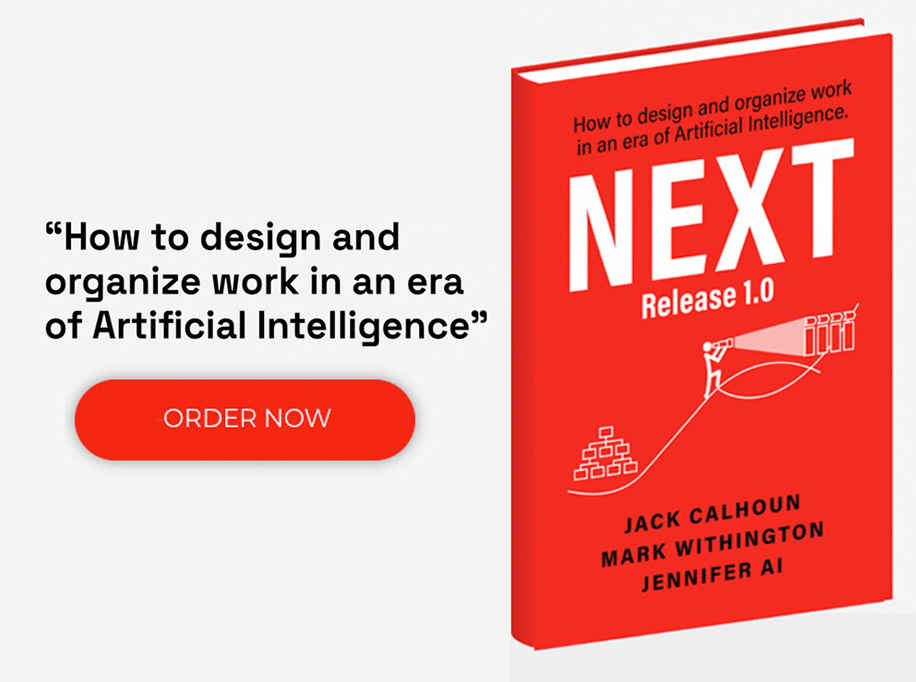Today’s business world is on the cusp of rapid transformation. One must look no further than ChatGPT to sense the ground shifting beneath them. Digital transformation – the deliberate act of embracing new technologies such as AI, IoT, Big Data, etc., to transform your business model – is no longer a topic for future discussion but rather a strategic necessity that must be implemented today.
In this guide, we discuss our digital transformation strategy principles and share how to build a winning strategy.
What is a Digital Transformation Strategy?
A digital transformation strategy is a plan to leverage cutting-edge digital solutions to improve every facet of a business. The detailed plan assesses an organization’s exposure to digital disruption and ability to adopt digital technology. It also includes a roadmap for strategic implementation over time.
Why Having a Digital Transformation Strategy is Crucial
When it comes to digital transformation, businesses have a few options. They can stick with their old-school processes and let the competition sail by, eagerly and haphazardly adopt every shiny new technology, or strategically engage in digital transformation initiatives that lead to impactful and measurable results. While the first two paths may be tempting, the last path leads to the greatest success. Ultimately, a digital transformation strategy ensures the changes align with business goals and helps achieve the desired outcomes.
Digital Transformation Strategy Principles
Digital transformation requires intimate knowledge of an organization’s capabilities and context. At Accelare, we’ve identified four critical areas or domains an organization needs to focus on to rise to this challenge, aptly named Enterprise Fitness. Enterprise Fitness consists of four critical principles for digital transformation. Those essential areas are:
- Value Innovation & Customer Experience
The first principle of Value Innovation and Customer Experience views the organization’s ability to design and deliver a meaningful customer experience at a lower cost. This lens evaluates the organization’s ability to rapidly define and deliver new services or products in a consistent and efficient manner. It also focuses attention on the organization’s ability to define and deliver delightful customer experiences by defining critical interactions along the customer journey and mapping those interactions to the organization’s operating model.
- Operational Innovation & Agility
The second principle of Operational Innovation and Agility analyzes the organization’s ability to realign human capital, business processes, and current technology to anticipate and capitalize on market shifts. This perspective requires the organization to adopt a new governance model that expands beyond the current org-chart perspective, which we see as an inside-out view of what the employees do for the organization, to include a new, outside-in capability-based structure.
The perspective informed by the principle of Operational Innovation and Agility describes what existing capabilities need to be improved to run the current 1.0 business model and what new capabilities need to be developed to execute its new 2.0 business strategy.
- Organizational Engagement
The third principle of Organization Engagement evaluates the organization’s capacity to build alignment and active employee participation. This lens evaluates an organization’s ability to articulate its strategy with clear objectives and well-defined instrumentation that will measure progress toward those objectives over time. Ultimately, the principle of Organizational Engagement is the connective tissue that aligns the traditional org-chart with the new Enterprise Capability Model using the objectives and measurement instrumentation defined by senior management.
- Financial Health
The fourth and final principle of Financial Health assesses the organization’s ability to allocate capital to create short-term and long-term value for their stakeholders. Too often, short-term “Run and Improve” investments crowd out long-term, strategic “Transformation” investments. By explicitly separating the project portfolio into two distinct agendas, S2E organizations yield both short-term returns while maintaining long-term growth (i.e., avoid being over-Amazoned).
How to Build a Digital Transformation Strategy
Building a digital transformation strategy is a challenging task, and it can be even more difficult to implement the strategy once it’s formed. Plus, implementation takes time. It’s unreasonable to believe an organization can simply define and implement digital transformation in a day. It is important to recognize that digital transformation is much like training for a marathon, where one needs to attain a certain level of fitness in preparation for a 26.2-mile race ahead.
As a means of understanding where your organization is in its digital journey and where you should focus your efforts, Accelare has created a 12-question, 3-minute online assessment. The free evaluation will help you determine your organization’s ability to run and improve your existing 1.0 business model while simultaneously transforming into your next digital business model. Upon completion, our team will send you a customized report!
To take the first step in building your digital transformation strategy, take our online assessment here.











